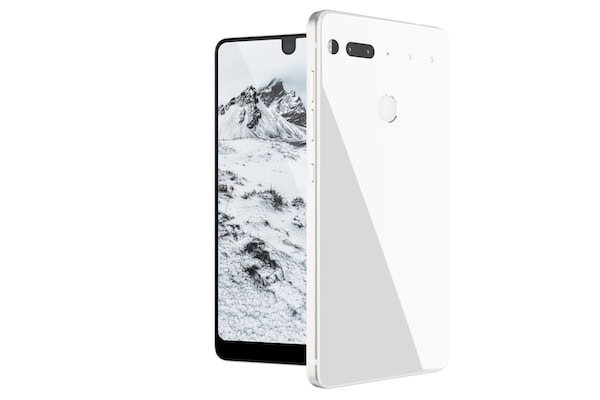
[Image above] Credit: Essential
Artists and designers often turn to ceramic materials to create something new, durable, and different.
And the tech world is no exception. Ceramic materials seem to be increasingly getting the attention of smartphone manufacturers.
At the Consumer Electronics Show earlier this year, electronics giant Xiaomi unveiled its new Mi Mix, the first smartphone with an all ceramic body made of microcrystal zirconium oxide. Although it turned heads because it was sleek, scratch-resistant, and ultimately different, consumers weren’t satisfied with the phone’s propensity to crack when dropped—something we all do.
And then there are the rumors about the upcoming iPhone 8—will it or won’t it be made of ceramic? Or will it feature an all-glass body instead? The rumors are sure to continue swirling until its release later this year.
As authors Arun Varshneya and Peter Bihuniak wrote in a feature article in the recent June/July ACerS Bulletin, consumer aesthetic preferences seem to be winning out over functionality when it comes to smartphone design. They were specifically discussing smartphone screens, but we might soon add smartphone bodies to that discussion if the ceramic trend continues.
Which it seems to be doing, at least for now—another smartphone is about to enter the market that again features a ceramic exterior. However, this device is the debut from an entirely new company called Essential.
Essential’s new smartphone, called simply Phone, is creating quite the stir for a first product offering from a company a tiny fraction of the size of the giants that currently dominate that massive smartphone market. But that’s because the guy behind Essential, Andy Rubin, is the architect of Android.
Essential’s startup status could be part of the draw—the company can do things with its Phone that the bigger guys can’t (or won’t) try, because the company isn’t concerned with being able to supply millions and millions of devices to a new-device-hungry world.
“For Apple, Samsung, and even LG, crafting a ceramic phone is a pointless adventure that would cost way too much to pursue, owing to their decision-making hierarchies and processes,” author Vlad Savov writes in story on The Verge. “But for a small outfit like Rubin’s Essential, it can be a passionate project of refinement that ends up delivering a number of desirable intangibles for the consumer.”
The Phone really does has a lot of desirable attributes and design features, but let’s focus on its materials.
While the details are scant so far, Essential’s Phone will reportedly have a ceramic back, a Corning Gorilla Glass 5 cover screen that slightly curves onto the edges (like the current Apple iPhone), and a titanium frame to protect its edges.
According to Essential’s website, its titanium frame provides significant protection when the phone is dropped, a necessity that Xiaomi’s sleek ceramic body suffered from.
“When performing a corner drop test on solid concrete, the Essential Phone’s titanium enclosure survived the fall without blemish, unlike the aluminum competitor devices,” Essential’s website states.
Of course, that statement only indicates that the titanium survived without blemish, not the ceramic or glass materials on either side.
Nonetheless, we know that Gorilla Glass 5 is Corning’s strongest formulation yet. But what about that ceramic?
Essential touts the sensations and feeling of the Phone’s ceramic back, but provides little details on what ceramic it actually is or how it’s manufactured.
The only technical details Essential provides is saying that the ceramic was a challenge to incorporate into the Phone because the material shrinks 25% when fired. “We spent months and months, but we eventually honed in on a process that allowed us to get cost down to the point where it’s both feasible and flawless.”
But flawless only goes so far—like up until the point where you drop your smartphone. Because let’s face it, you’re going to bobble that hunk of technology sooner or later. And Essential is so confident in the strength of their titanium frame that they’re not even making or selling protective cases for their new smartphone.
So the trend continues. But what do you think—is the incorporation of ceramic materials in smartphone exteriors a good idea?
Author
April Gocha
CTT Categories
- Electronics
- Glass
- Material Innovations


